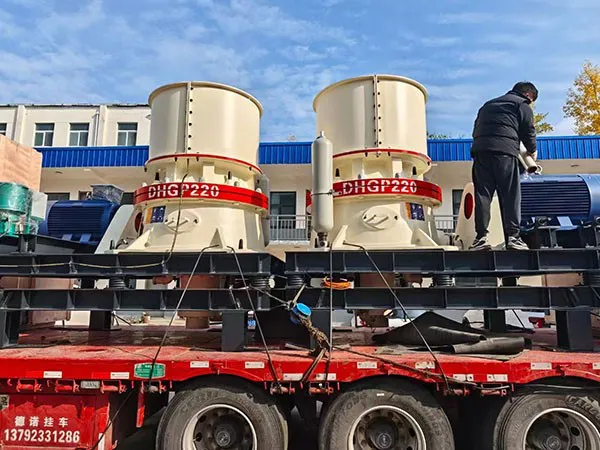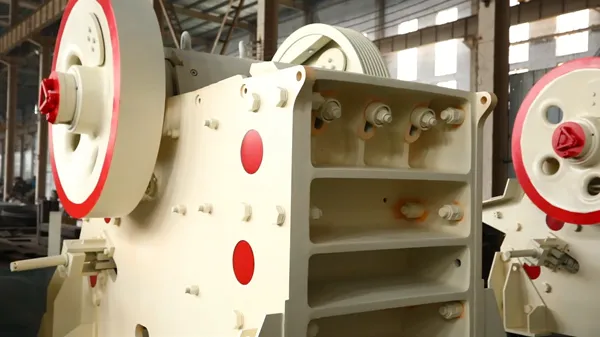Jaw crusher liners play a crucial role in the crushing process, protecting the crusher’s components while enhancing efficiency and durability. The choice of liner material depends on factors such as feed material hardness, abrasiveness, and operating conditions. Choosing the right liner material for your jaw crusher is crucial for maximizing its lifespan, efficiency, and overall performance.

Material Being Crushed (Feed Material):
Type: What kind of rock or material are you crushing? (e.g., granite, limestone, basalt, ore, recycled concrete, etc.)
Abrasiveness: Highly abrasive materials (like granite and some ores) will wear liners down much faster.
Hardness (Mohs Scale or Brinell Hardness): The harder the material, the more resistant the liner needs to be.
Size and Shape of Feed: Larger, angular material puts more stress on the liners.
Moisture Content: Wet or sticky material can cause buildup and impact liner wear.
Crusher Size and Type: The size and specific design of your jaw crusher (e.g., single toggle, double toggle) will influence the liner design and material suitability.
Desired Production Rate: A higher production rate generally means more wear on the liners.
Operating Conditions:
Ambient Temperature: Extreme temperatures can affect the properties of some liner materials.
Humidity: High humidity can contribute to corrosion.
Dust Levels: High dust levels can exacerbate abrasion.
Budget: While performance is paramount, cost is always a factor.

Manganese Steel (Mn13, Mn18, Mn22):
Pros:
Work Hardening: The surface hardens under impact, becoming more wear-resistant as it's used. This is the primary benefit.
High Toughness: Resists cracking and chipping.
Relatively Affordable: Compared to some other options.
Good for high impact loads and coarse crushing.
Cons:
Softer in its initial state: Can wear quickly at first if not properly run in.
Less Effective with Fine Crushing: Requires sufficient impact to work harden. If material is too fine, it won't work harden, and will wear quickly.
Lower Abrasion Resistance than Some Alternatives: Not the best choice for extremely abrasive materials in fine crushing applications.
Can deform under extreme pressure.
Variations: Mn13, Mn18, and Mn22 refer to the percentage of manganese. Higher manganese content typically provides better work hardening and toughness.
Mn13 is a common starting point, while Mn18 and Mn22 are used for more demanding applications.
Alloy Steel (Chrome Moly, Nickel-Chrome):
Pros:
Higher Abrasion Resistance than Manganese Steel: Better for abrasive materials, especially in finer crushing applications.
Good Strength and Hardness: Provides good overall performance.
Less prone to deformation than manganese steel.
Cons:
Generally More Expensive than Manganese Steel:
Can be more brittle than manganese steel: Susceptible to cracking under high impact loads if not properly specified.
May not work harden as effectively as manganese steel.
High-Chrome White Iron:
Pros:
Excellent Abrasion Resistance: Superior for highly abrasive materials like silica sand, gravel, and some ores.
High Hardness:
Cons:
Brittle: Very susceptible to cracking under impact. Best suited for situations with low impact and consistent feed.
High Cost:
Difficult to Machine:
Limited Work Hardening.
Requires very careful design and installation to avoid premature failure.
Ceramic Inserts/Composites:
Pros:
Extremely High Wear Resistance: Can significantly extend liner life in highly abrasive applications.
Can be tailored to specific wear patterns.
Cons:
Very Expensive:
Brittle: Requires a robust backing material (e.g., steel) for support.
Difficult to Install and Maintain:
Specialized application only (usually localized areas of extreme wear).

Analyze Your Feed Material: Determine its type, abrasiveness, hardness, size, and moisture content. This is the most important step.
Consider Your Crusher Type and Size: Factor in the specific model and its design characteristics.
Assess Your Desired Production Rate and Operating Conditions: Account for any factors that might influence liner wear.
Start with Manganese Steel (Typically Mn13 or Mn18): This is often the best starting point due to its balance of cost, toughness, and work hardening.
Monitor Liner Wear Closely: After installing the liners, regularly inspect them for wear patterns, cracking, and deformation. Keep detailed records of liner life and performance.
If Manganese Steel Wears Too Quickly (Especially Due to Abrasion): Consider switching to an alloy steel (chrome moly or nickel-chrome) or high-chrome white iron.
If Alloy Steel Cracks or Chips Frequently (Due to Impact): Re-evaluate the feed material size and consider returning to manganese steel or modifying the crusher's settings (e.g., reducing feed size).
If Wear is Highly Localized: Explore ceramic inserts or composites in the areas of greatest wear to extend liner life.
Consult with Liner Suppliers: Experienced liner suppliers can provide valuable insights and recommendations based on your specific application. Share your data and observations with them.
Key Considerations for Specific Scenarios:
Hard, Abrasive Rock (e.g., Granite, Basalt, Some Ores): Consider alloy steels or high-chrome white iron. Start with alloy steel if impact is significant.
Softer, Less Abrasive Rock (e.g., Limestone, Dolomite): Manganese steel is usually a good choice.
Recycled Concrete: Manganese steel is often suitable, but monitor for steel reinforcement that can cause excessive wear. Consider magnets to remove steel.
Fine Crushing: Alloy steels are often preferred because manganese steel may not work harden effectively.
High-Impact Crushing: Manganese steel is generally the best choice due to its toughness and work hardening properties.
High Moisture Content/Sticky Material: Consider liner designs with improved material flow to prevent buildup.
In Summary:
Choosing the right jaw crusher liner material is an iterative process that requires careful analysis of your application, monitoring of liner performance, and collaboration with experienced suppliers. Don't be afraid to experiment with different materials and designs to optimize your crusher's performance and minimize downtime.
Address: Luoyang Luoxin Industrial Park, Henan,China
E-mail: sales@yd-crusher.com
Phone: 86-139-3993-0123

Yude
Mechanical
Create the greatest value for customers
Provide the best quality products and services
86-139-3993-0123
sales@yd-crusher.com
Luoyang Luoxin Industrial Park, Henan,China